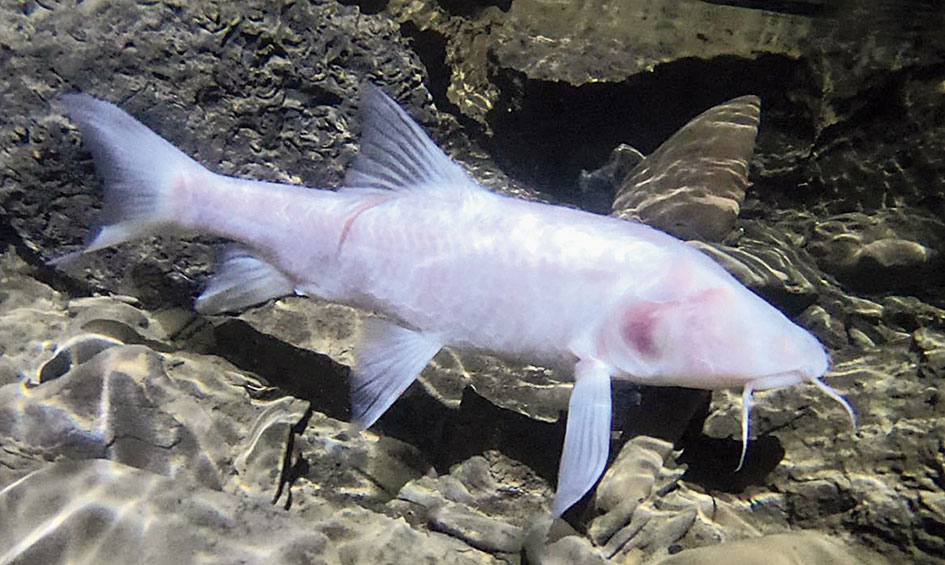The largest known cavefish, found in Meghalaya, still does not have a name.
In February 2019, an international team of cave explorers from India and other countries encountered a new cave fish in Jaintia Hills of Meghalaya and a return visit was made in January to gather more information on the fish.
The team published its findings recently in The Journal of Cave and Karst Studies where they said the largest individual seen in the cave was more than 400mm in standard length making it, by far, the largest known subterranean fish found to date. The large size is probably related to plentiful food and initial investigations indicate it is a close anatomical match to Tor putitora (golden mahseer) but differs from it in its lack of eyes.
Subterranean fish typically lack pigmentation and are white or pinkish in colour. Their eyes are reduced in size or entirely absent.
“About 250 species of subterranean fish are known worldwide. The vast majority of these species are relatively small, being typically less than 15cm in length. There are a few larger species, including some long, thin-bodied eels that reach 35cm in length. The new species exceeds 40cm in length and is also considerably more bulky and heavily built than the cave eels.” Dan Harries of Grampian Speleological Group, UK, told The Telegraph. “The fish remains nameless at the moment,” he said.
“They were first seen in February 2019 and the fish specialists are now trying to get a better understanding of them. This time in January we have found very similar fish in a different cave. It is white and has reduced eyes but not as reduced as the first fish. So possibly there are multiple populations of fish isolated in different caves and all slightly different. More information is needed,” he said.
The team is participating in expeditions of the Caving in the Abode of the Clouds Project. This project consists of a long running series of expeditions that have been exploring and mapping Meghalayan caves since 1992.
Rajeev Raghavan of Kerala University of Fisheries and Ocean Studies, Kochi, said, “From whatever little information we have now, the cavefish is likely to be the largest known cavefish in the world. And the first cave form of the genus Tor (a genus of the fish commonly known as mahseer) from anywhere in the world. “We need to identify the fish with an integrative approach (morphology, anatomy and genetics) by comparing it with other known species within the genus Tor/mahseer. We are yet to name the species,” he added.
“The 2020 expedition has resulted in the gathering of more photographs and videos as well as genetic material.”
Scientists involved in the study said, “Like many cave animals, the ability of the fish to move into new areas tends to be constrained by the layout of the caves in which they live. If that is the case with this fish it would make the species extremely vulnerable even to very localised impacts that might be associated with changing land use, pollution or harvesting.”
“There were floods in the cave during the rainy months as patches of forest vegetation deposited by flood waters were seen deep within the cave system. Also this year, some of the pools seen in 2019 had partially filled with boulders moved by the force of the water,” Dan said.











